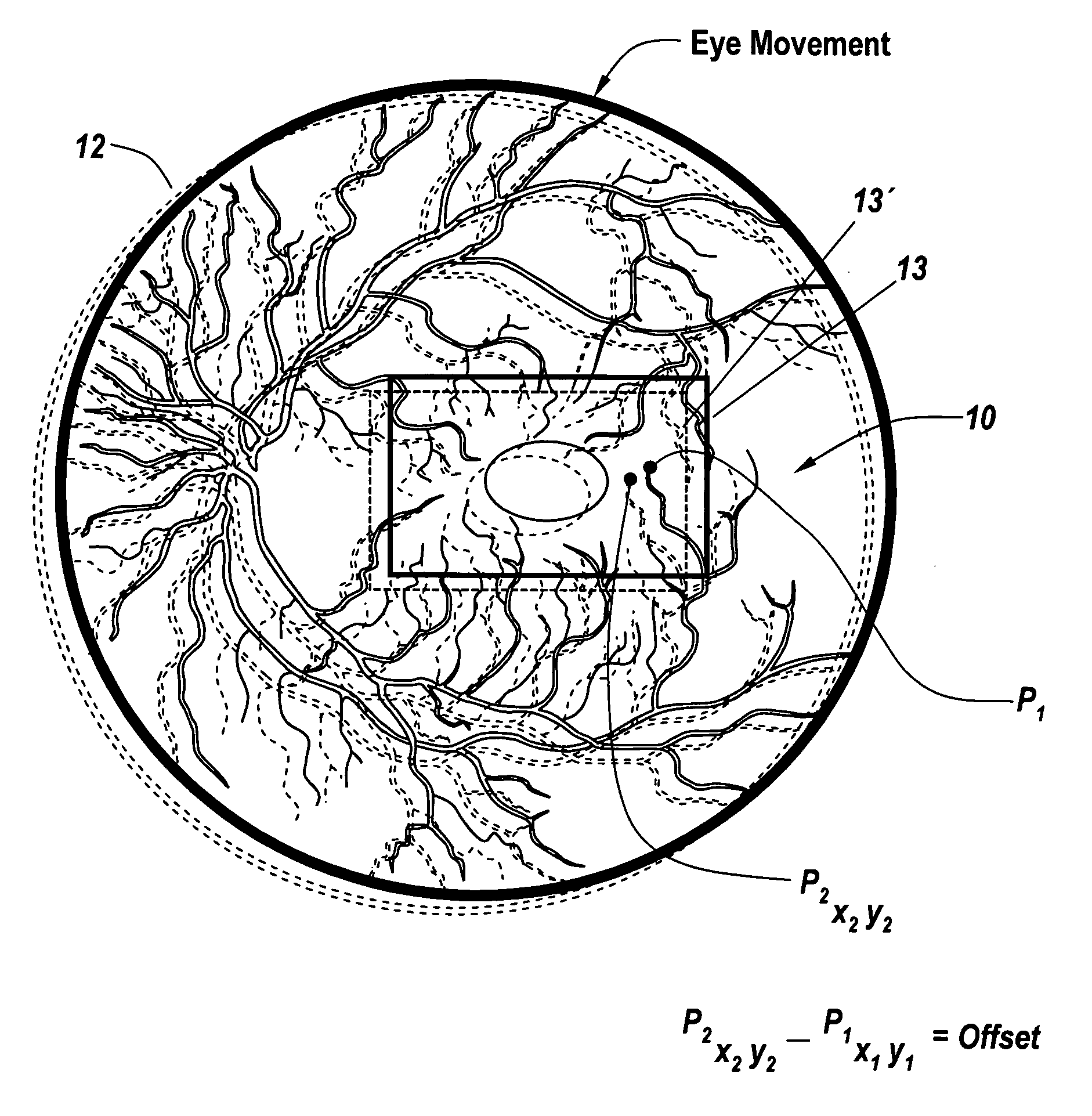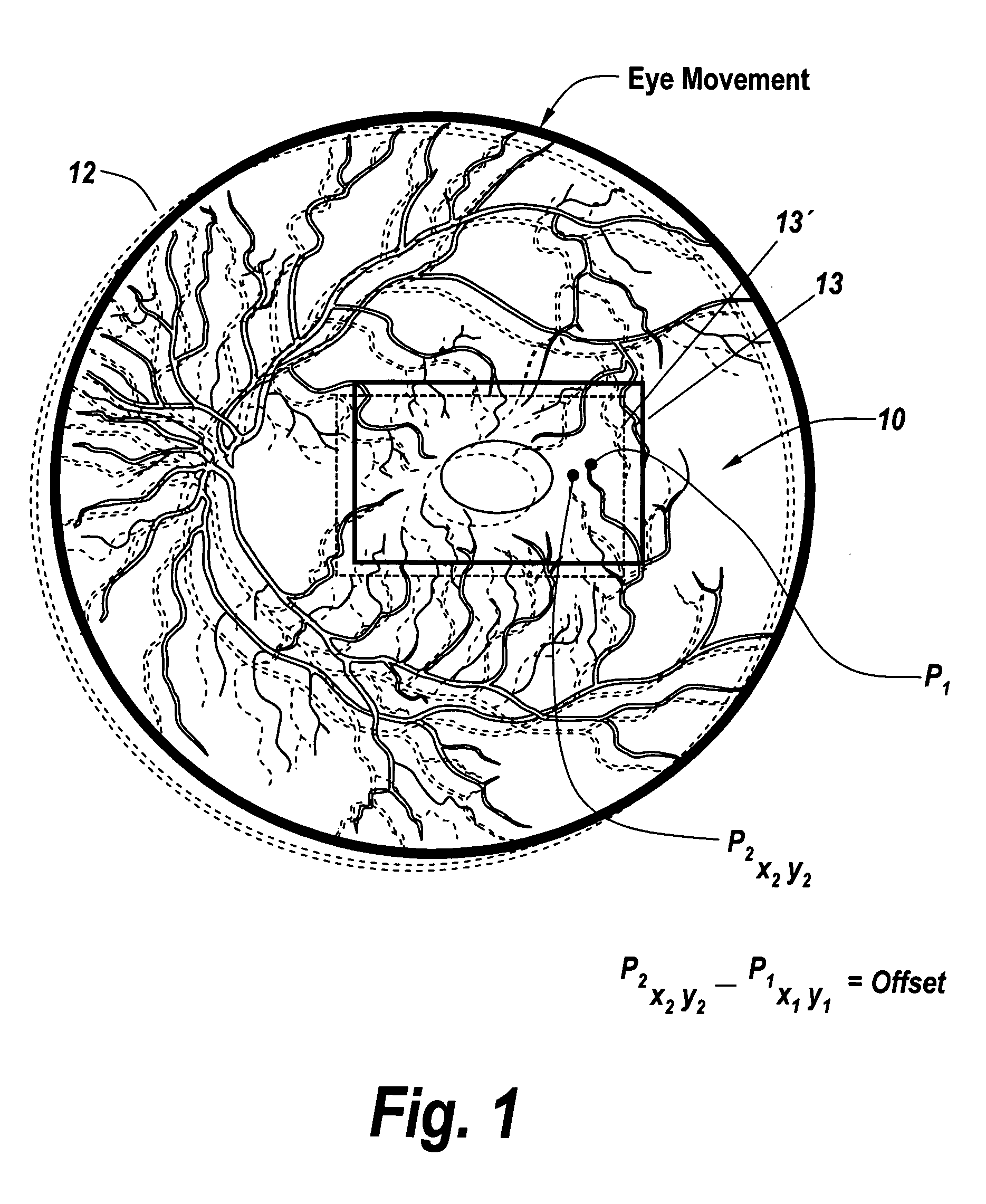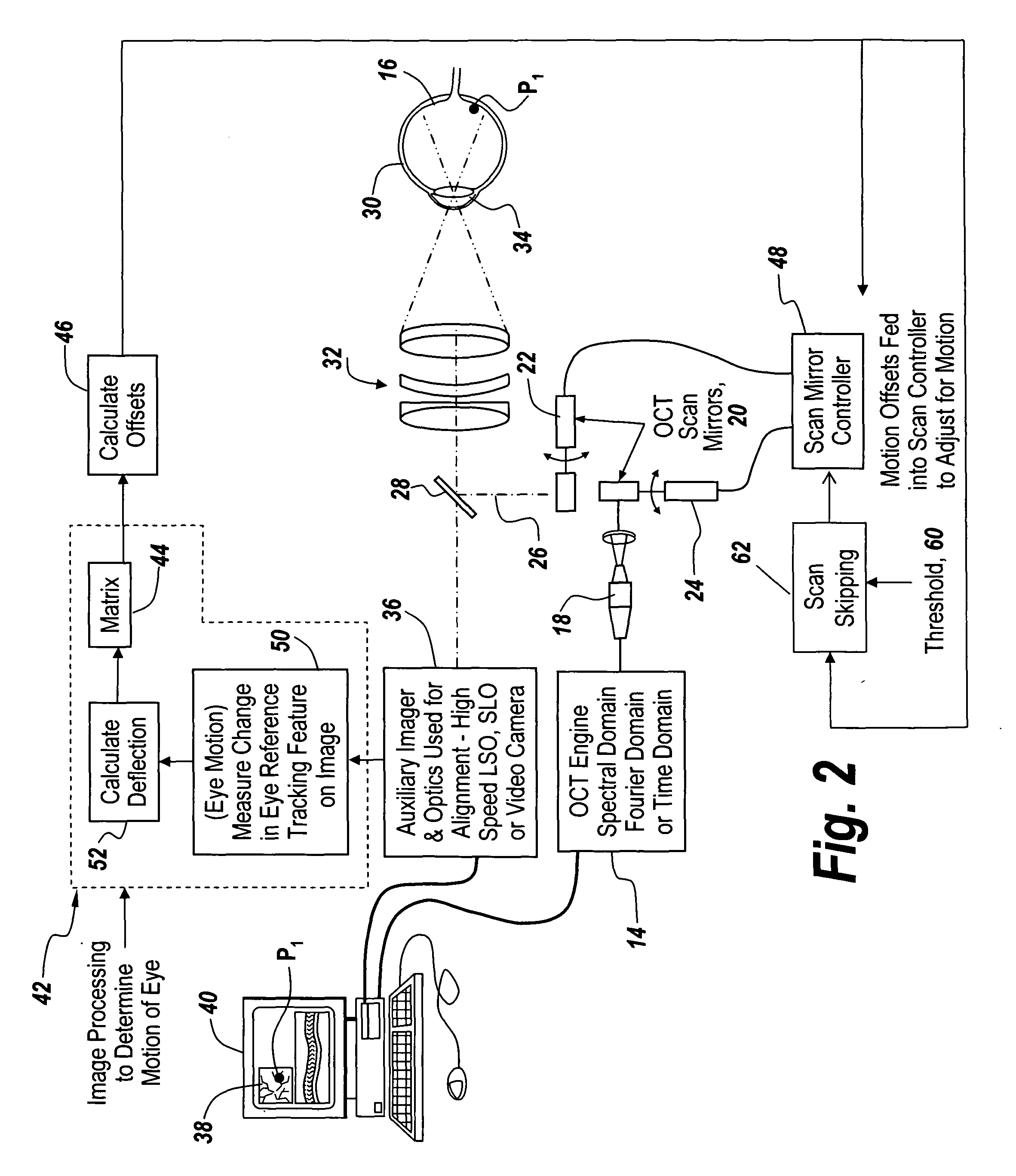Region based vision tracking system for imaging of the eye for use in optical coherence tomography
a vision tracking and eye imaging technology, applied in the field of optical coherence technology, can solve the problems of data not being able to line up properly, scanning takes a certain amount of time, and the eye cannot move in time, so as to eliminate the effect of the eye movement and accurate offs
- Summary
- Abstract
- Description
- Claims
- Application Information
AI Technical Summary
Benefits of technology
Problems solved by technology
Method used
Image
Examples
Embodiment Construction
[0037]Referring now to FIG. 1, an image 10 of the retina of an eye is illustrated having a data rich region of features including vessels and other artifacts clearly visible on the surface of the retina. Eye movement is shown in dotted line in which the eye moves as illustrated by dotted line 12 resulting in movement of the data rich region image of the retina as viewed by an auxiliary imager.
[0038]Here it can be seen a point in a data rich region 13 which constitutes for instance a reference tracking feature moves from point P1 at X1 Y1 to P2 at X2 Y2. This corresponds to a shift in region 13 as shown by dotted outline 13′. Note that region 13 of the retina sensed includes virtually hundreds and even thousands of these points, the movement of which is calculated through comparing a registration process so as to take advantage of all of the information that is available in the region. This is contrasted to the use of a single line which carries with it a number of artifacts that cor...
PUM
 Login to View More
Login to View More Abstract
Description
Claims
Application Information
 Login to View More
Login to View More - R&D
- Intellectual Property
- Life Sciences
- Materials
- Tech Scout
- Unparalleled Data Quality
- Higher Quality Content
- 60% Fewer Hallucinations
Browse by: Latest US Patents, China's latest patents, Technical Efficacy Thesaurus, Application Domain, Technology Topic, Popular Technical Reports.
© 2025 PatSnap. All rights reserved.Legal|Privacy policy|Modern Slavery Act Transparency Statement|Sitemap|About US| Contact US: help@patsnap.com



